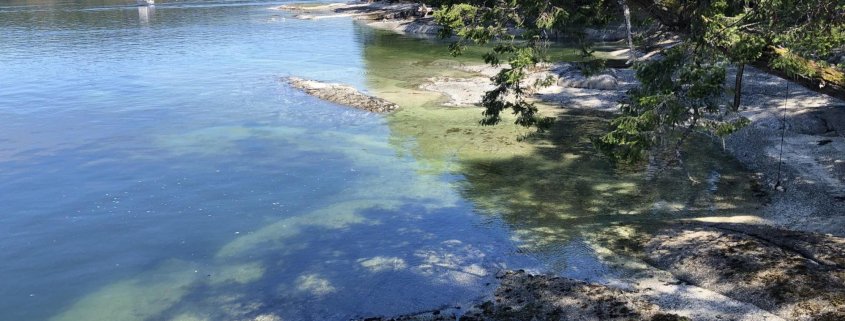
The climate is changing and will continue to change for the foreseeable future. This will present myriad of challenges for Pacific salmon at every stage of their life cycle. While many of the stressors that salmon will experience due to climate change are beyond local control, we can give Pacific salmon their best shot for thriving into the future by proactively managing, restoring and protecting the habitats they depend on.
Recent research has emphasized the importance of the time that young Pacific salmon spend rearing in estuaries and the nearshore environment. We now understand that estuaries and the nearshore environments are much more than migratory corridors for Pacific salmon. In fact, they are critical stop-over habitats where young salmon grow, adjust and prepare for their life at sea. Pacific salmon depend on healthy shoreline, eelgrass and kelp ecosystems for food and refuge during their time there. However, estuaries and nearshore environments are also among the most impacted by urban development, aquaculture activities, boat and shipping traffic and recreational use. As a result, these vital habitats have suffered and are even more vulnerable to the pressures of climate change.
Despite the significance of estuaries and nearshore habitats to the Pacific salmon life cycle, until fairly recently these systems have been largely overlooked with most research and restoration efforts focused on Pacific salmon in freshwater systems. To begin to fill gaps in knowledge and how best to support estuary and nearshore habitats for the benefit of Pacific salmon, PSF is putting together a climate change primer titled “Supporting Pacific Salmon in a Changing Climate: Adaptive Restoration for Nearshore and Estuarine Habitats in the Salish Sea”. This report is designed to inform and guide environmental stewards and managers as well as the general public on the best practices for nearshore and estuary habitat restoration with climate change adaptation and salmon in mind. It includes the following:
- a literature review focused on the importance of estuarine and nearshore habitats to Pacific salmon;
- up to date climate change projections and their consequences for the Salish Sea; and
- effective restoration strategies for estuarine and nearshore habitats that will support wild salmon populations as they face the challenges of climate change.
Applying the knowledge and the actions outlined in this report, we are not only helping ensure a future for salmon, we are also helping ourselves and our coastal communities to become resilient and adapt to the future.
To learn more, watch this video of PSF Biologist – Maria Catanzaro giving an overview of document that is in preparation:



